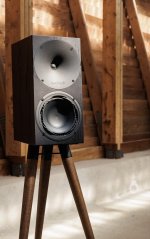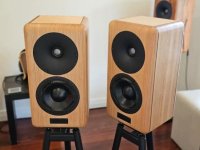@b_force
Honestly, for me, I thought ARTA/STEPS was more of a challenge to set real SPL readings...
This is how I set my SPL levels in REW:
Click SPL meter:

Select SPL, Z, Slow:

Click Calibrate:

choose "Use an external signal"

Connect your (B&K) SPL calibrator to your connected microphone and play the test tone eg. 1000Hz, 94dB. Then hit OK:
Type SPL level of your test signal in the box, then click FINISHED:

Is this what you meant by SPL calibration with REW?
Or do you mean calibration using a frequency response data files to correct for non-flat frequency responses that many microphones, amplifiers have, as explained by @JohnPM in post #158?
In practical terms, I think we all agree that actual SPL values are not important in loudspeaker design. But it is nice to be able to compare measurements, at least within a dB or so. But when taking distortion measurements it's absolutely critical to equalize and match the SPL of the fundamental...
Honestly, for me, I thought ARTA/STEPS was more of a challenge to set real SPL readings...
This is how I set my SPL levels in REW:
Click SPL meter:
Select SPL, Z, Slow:
Click Calibrate:
choose "Use an external signal"
Connect your (B&K) SPL calibrator to your connected microphone and play the test tone eg. 1000Hz, 94dB. Then hit OK:
Type SPL level of your test signal in the box, then click FINISHED:
Is this what you meant by SPL calibration with REW?
Or do you mean calibration using a frequency response data files to correct for non-flat frequency responses that many microphones, amplifiers have, as explained by @JohnPM in post #158?
In practical terms, I think we all agree that actual SPL values are not important in loudspeaker design. But it is nice to be able to compare measurements, at least within a dB or so. But when taking distortion measurements it's absolutely critical to equalize and match the SPL of the fundamental...

